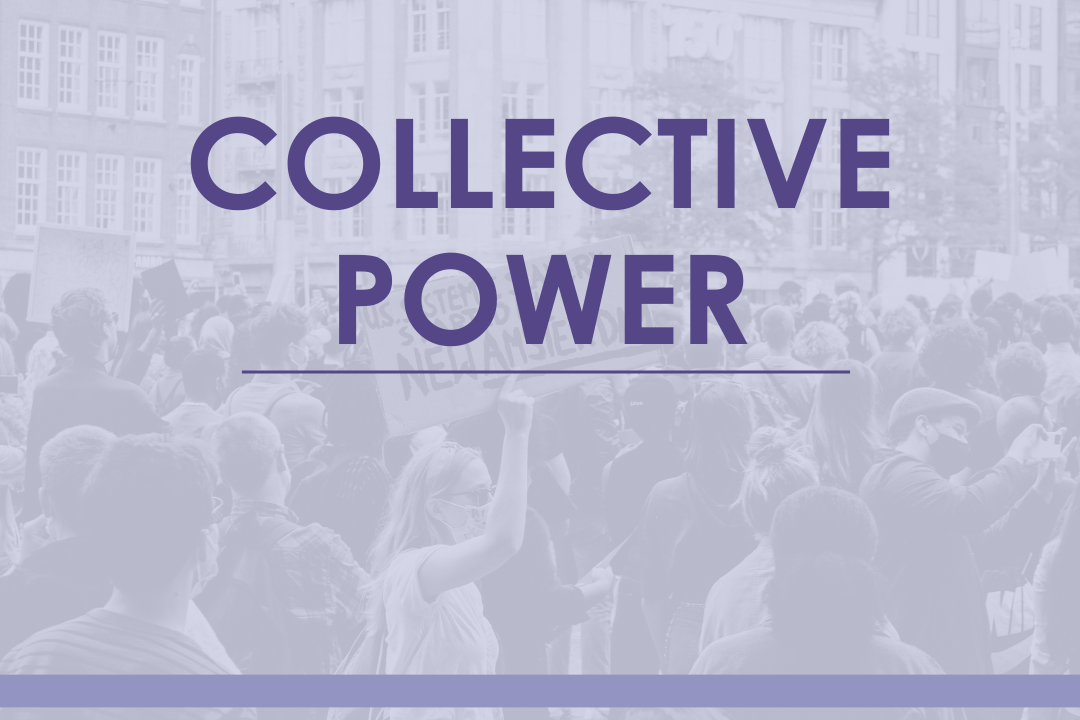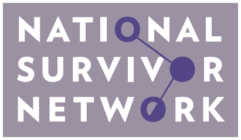April 18, 2024 | Category: Collective Power Building

What is “Collective Power”?
Last year, the NSN was honored to have Nikita Mitchell and Chinyere Tutashinda present a training for members of the National Survivor Network and Azadi Kenya on “Basics of [Community] Organizing.” One of the things that stood out to me was that the role of an organizer resulted in shifting the dynamics of power that impact people. Organizing is strategic, and it is focused on shifting the balance of power to increase power for your communities (not just for you).
I may not be remembering the wording perfectly, but when someone asked the difference between speaking-based advocacy and organizing, one of the facilitators said – “Did the balance of power shift as a result of your speaking?”
If you speak at a conference or policy space about the importance of survivor leadership, that is not organizing.
If you support survivors in developing collective actions that forward their leadership and inclusion, that is organizing.
At the NSN, our leadership and members do both. And while the former is easier to access and more normalized in the anti-trafficking sector, the latter – building collective power through organizing collective action – is often harder to do.
This may be for a few reasons.
First, many of us experienced “power over” during our trafficking experiences. We likely went through a lot of our trauma feeling alone, having to care for ourselves and fight for what was ours. We may be unfamiliar with what it feels like to be part of collective power or may have internalized a belief that power over is the only kind of power. If that’s how we see power, we may then either want that for ourselves as part of our independence (causing us to unintentionally harm others in our clamor for “success”) or fear power altogether.
Second, the anti-trafficking sector’s unique history means that its mainstream frameworks around healing, services, support, and recovery are not rooted in collective power-building. This means that even our recovery may be very individualistic – focusing on the healing of individual trauma rather than historical, intergenerational, systemic, structural, or community trauma. It may focus on individual healing as the end goal, rather than the transformation of harmful conditions. We may notice that the sector has traditionally hyper-focused on solutions for individual risk factors rather than seeing oppression, colonialism, and the American model of unfettered capitalism as the root causes of human trafficking.
Third, when the anti-trafficking sector started lifting up “survivor leadership,” it focused on individual survivors. An org brings in one survivor to review their practices or hires another to share their story at an event. It has a few survivors give feedback and then considers that feedback individually, taking some recommendations without taking others, often failing to put the differing perspectives into dialogue with each other. It sometimes pits survivors against each other – even unintentionally – responding to feedback from a survivor they disagree with by sharing “Well I know other survivors who disagree with you,” while using that first survivor’s feedback about a different topic to shut down feedback from someone else.
And this may mean that when we move into survivor leadership and experience challenges, we stay stuck in our individualist thinking even as we advocate for ourselves. Sometimes, we might be the ones who are unintentionally causing harm or expecting to be coddled because the sector has treated survivors with kid gloves for so long (which is itself othering). We may then resort to familiar models of power-over, attacking and misrepresenting in order to ensure our own perceived “security.”
But many times, we are indeed being harmed by individuals and organizations and norms within the sector. We have a harmful experience with an organization, and we lean into individual approaches that are available to us. We may try to advocate for ourselves and our needs through conversations. We may file a formal grievance, hoping that the process will bring resolution. When we get frustrated, we may escalate to a call out, but we are often afraid of what might happen if we do publicly name harm. We then hear of individuals – one after the other – being repeatedly harmed in the same ways by the same “broken stair” individuals or organizations. Everyone knows who they are except for the newer folks they repeatedly target. Sometimes they even do this under the banner of “newer voices” being better than listening to experienced leaders!
But we don’t build collective power and rarely see the issues meaningfully addressed.
Impactful, lasting change is often the result of building collective power through collective action.
Collective action is not the same as groupthink!
- Collective action is grounded in a broad, community-based understanding of the needs of communities. Groupthink often focuses on adherence to the needs of a small number of individuals and often lands on solutions that are too narrow in scope.
- Collective action requires navigating conflict to get to a solution that meets diverse needs. Groupthink relies on conforming to the majority opinion to maintain group harmony.
- Collective action requires creative thinking to bridge different gaps. Groupthink discourages creativity by starting with an assumption of what peoples’ needs will look like.
- Collective action must necessarily consider critical reasoning and alternatives to majority assumptions. Groupthink often does not include critical reflection on our own complicity in systems of harm.
What is collective action?
Collective action is when a group of people experiencing similar challenges come together in solidarity to take actions that will bring about change. The changes sought by collective organizing shift the power dynamics at play. Collective action requires coordinated efforts to both take strong stands as well as to support those who are participating.
What are some examples of collective action?
- The Montgomery Bus Boycott (1955-1956), in which communities organized a carpool system of 300 cars to be an alternative, collected new and used shoes to replace those worn from walking, and even organized insurance policies when the city of Montgomery pressured insurance companies to drop coverage for cars used in the boycott. People were arrested (including Martin Luther King, Jr.) and faced harassment and threats for their participation, but the solidarity of this collective action resulted in the desegregation of buses.
- The Atlanta Washerwoman Strike (1881) in which 3,000 laundresses joined the initial 20 in striking for better pay. White laundresses (who were less than 2% of the city’s workers) also joined, and the strikers were supported by local Black ministers. Women who were part of the strike were arrested, fined, and harassed by authorities, but ultimately achieved a uniform, higher rate for all washerwomen.
- The Black Panthers Party Free Breakfast for School Children program (1969-1970s) sought to fill in gaps left by government programs by caring directly for the communities. While their work to feed children was met with fear from the FBI, harassment and vandalism by law enforcement, and racist misinformation, it demonstrated to school professionals that children learned better when they weren’t hungry. Shortly after their programs were dismantled, the US Government started a free breakfast program.
- The Coalition of Immokalee Workers boycott of Taco Bell (2001-2005) was an effort to gain fairer wages for farmworkers in who picked the tomatoes – for whom rates had remained stagnant for 15 years. Since they didn’t have the federal right to organize in unions, this action combined boycotts with public messaging and resulted in doubling workers’ sub-poverty wages.
Collective action doesn’t mean that the angriest person “rallies the troops” by getting everyone else angry enough to act – that often leads to a group of dysregulated and disorganized efforts that have harmful impacts on the people trying to organize. Collective action means that people work together, identify patterns, check each other, call each other in, care for each other, and think strategically about how to bring about the greatest good for impacted people. It means they stay focused on the action and trust each other to keep the steady momentum going. It’s a different way of thinking about how we address harm, and a different way of thinking about how we care for each other.
We’ll be exploring more about collective action in the coming months, and hope you’ll learn with us. We have much to learn from the brilliance and impact of long-sustained movements.
